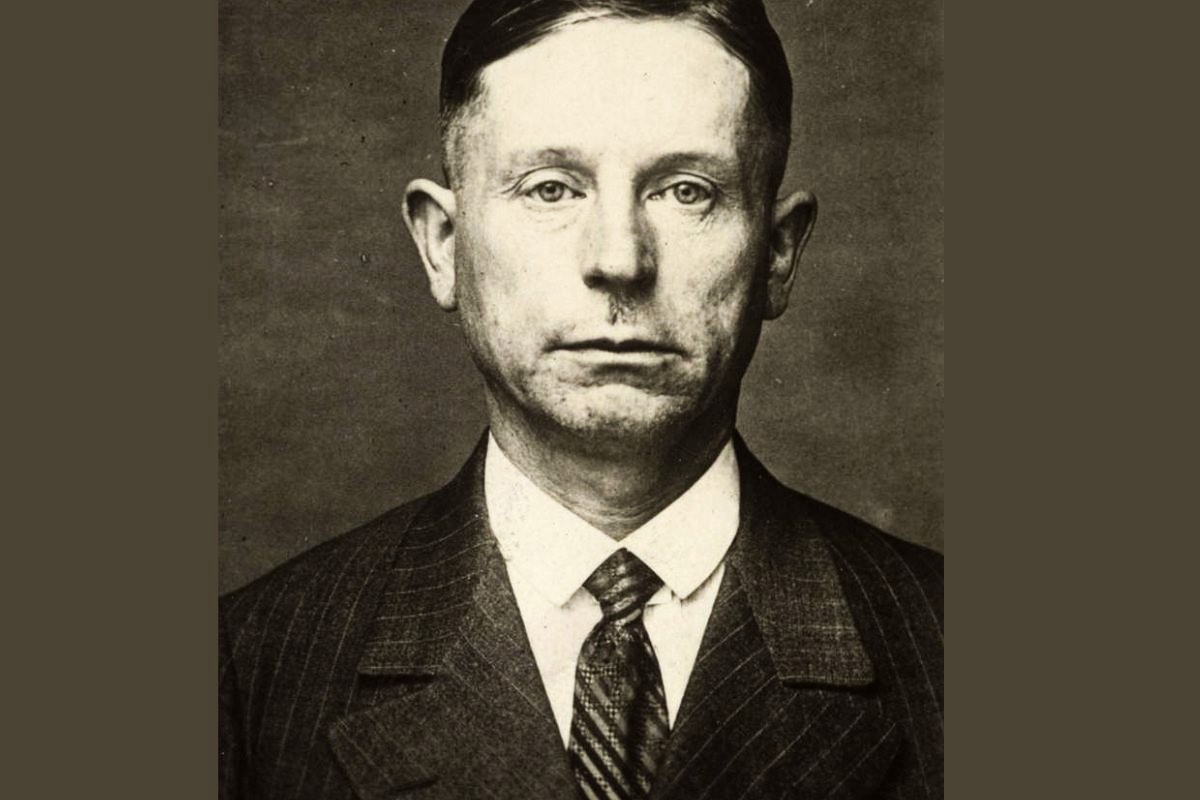
Peter Kurten, also known as the "Vampire of Düsseldorf," was one of history's most notorious serial killers. Born in Germany in 1883, Kurten's life was marked by extreme violence and a chilling lack of remorse. What drove him to commit such heinous acts? This blog post dives into 35 chilling facts about Peter Kurten, shedding light on his early life, his gruesome crimes, and the psychological profile that baffled experts. From his troubled childhood to his eventual capture and trial, these facts aim to provide a comprehensive look at the man behind the monstrous deeds. Buckle up for a journey into the dark mind of Peter Kurten.
Key Takeaways:
- Peter Kürten, the "Vampire of Düsseldorf," was a notorious serial killer with a troubled childhood, leading to a fascination with blood and violence that drove him to commit heinous crimes.
- Kürten's capture and execution marked the end of his reign of terror, but his story continues to fascinate and horrify people, leaving a lasting impact on popular culture and academic studies.
Early Life and Background
Peter Kürten, often referred to as the "Vampire of Düsseldorf," had a life filled with dark and disturbing events. His early years set the stage for his later crimes.
- Born on May 26, 1883, in Cologne, Germany, Kürten was the third of thirteen children.
- His family lived in extreme poverty, which contributed to a tumultuous and abusive upbringing.
- Kürten's father was an alcoholic who frequently beat his wife and children.
- At the age of nine, Kürten attempted his first murder by drowning two school friends.
- He ran away from home multiple times to escape his father's abuse.
Criminal Beginnings
Kürten's criminal activities began at a young age and escalated over time. His early crimes were a prelude to the more heinous acts he would commit later.
- By the age of 16, Kürten had already been arrested for petty theft and arson.
- He spent much of his youth in and out of prison for various crimes.
- Kürten claimed that his first sexual experience involved the killing of a dog, which he found sexually arousing.
- He developed a fascination with blood, which would later earn him the nickname "Vampire of Düsseldorf."
- In 1913, Kürten committed his first known murder, killing a 9-year-old girl named Christine Klein.
The Düsseldorf Murders
Kürten's most infamous crimes took place in Düsseldorf, Germany, where he terrorized the city with a series of brutal murders and assaults.
- Between February and November 1929, Kürten committed at least nine murders and numerous assaults.
- His victims ranged in age from young children to elderly women.
- Kürten often used a variety of weapons, including knives, scissors, and hammers.
- He would sometimes drink the blood of his victims, further cementing his "Vampire" moniker.
- The media frenzy surrounding the murders caused widespread panic in Düsseldorf.
Capture and Trial
Kürten's reign of terror eventually came to an end, but not before he left a lasting impact on the city and its residents.
- In May 1930, Kürten was finally captured after one of his victims, Maria Budlick, managed to escape and lead the police to him.
- During his trial, Kürten confessed to 79 individual acts of crime, including murders, attempted murders, and sexual assaults.
- He showed no remorse for his actions and often described his crimes in graphic detail.
- Kürten's trial was highly publicized, drawing large crowds and extensive media coverage.
- On April 22, 1931, he was found guilty and sentenced to death.
Execution and Legacy
Kürten's execution marked the end of his life, but his story continues to fascinate and horrify people to this day.
- Peter Kürten was executed by guillotine on July 2, 1931, in Cologne, Germany.
- His last words were reportedly, "Tell me. After my head has been chopped off, will I still be able to hear, at least for a moment, the sound of my own blood gushing from the stump of my neck? That would be the pleasure to end all pleasures."
- Kürten's brain was later examined by scientists in an attempt to understand his psychopathy.
- His crimes have been the subject of numerous books, documentaries, and films.
- Kürten's case has been studied extensively in the fields of criminology and psychology.
Psychological Profile
Understanding Kürten's psychological makeup provides insight into what drove him to commit such heinous acts.
- Kürten was diagnosed with antisocial personality disorder and sadistic personality disorder.
- He exhibited traits of narcissism, including a lack of empathy and a need for admiration.
- Kürten's childhood abuse likely contributed to his violent tendencies.
- He had a high IQ, which he used to evade capture for many years.
- Kürten's fascination with blood and violence was a key component of his psychopathy.
Cultural Impact
Kürten's story has left a lasting mark on popular culture and continues to be a topic of interest.
- The 1931 film "M" by Fritz Lang was inspired by Kürten's crimes.
- Kürten has been referenced in various works of literature, including Thomas Harris's "Hannibal" series.
- His life and crimes have been the subject of numerous academic studies.
- Kürten's case has influenced the portrayal of serial killers in media and fiction.
- The "Vampire of Düsseldorf" remains one of the most infamous serial killers in history.
Final Thoughts on Peter Kurten
Peter Kurten, also known as the Vampire of Düsseldorf, left a chilling mark on history. His gruesome acts and twisted psyche continue to fascinate and horrify. Understanding his background, motives, and the societal conditions of his time provides insight into how such a monster could emerge. Kurten's story serves as a grim reminder of the depths of human depravity. His capture and trial brought some closure to his victims' families, but the scars remain. By studying figures like Kurten, society can better understand the warning signs and hopefully prevent future tragedies. His life, though dark and disturbing, offers lessons in criminal psychology and the importance of vigilance. Remembering his victims honors their memory and underscores the need for justice and compassion in the face of evil.
Frequently Asked Questions
Was this page helpful?
Our commitment to delivering trustworthy and engaging content is at the heart of what we do. Each fact on our site is contributed by real users like you, bringing a wealth of diverse insights and information. To ensure the highest standards of accuracy and reliability, our dedicated editors meticulously review each submission. This process guarantees that the facts we share are not only fascinating but also credible. Trust in our commitment to quality and authenticity as you explore and learn with us.


